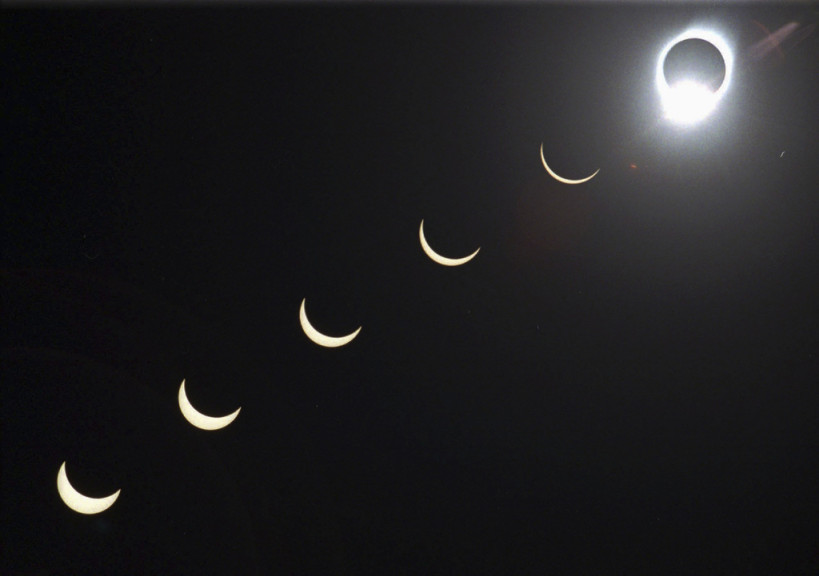Scientific Explorations during the Solar Eclipse

The progression of a total solar eclipse is seen in a multiple exposure photograph taken in 5-minute intervals, with the moon passing in front of the sun above Siem Reap in northwestern Cambodia, 225 kilometers (140 miles) from Phnom Penh, on Tuesday, Oct. 24, 1995. AP Photo/Richard Vogel
During solar eclipses, scientists try to learn as much as they can before the phenomenon finishes, and how to share those findings with the public. Today on the 21st, one of those scientists, Corinne Brevik, shares what she'll be doing when the Sun goes dark.
GUEST:
Cori Brevik
Assistant professor of practice in the School of Physics & Applied Physics, Southern Illinois University Carbondale

